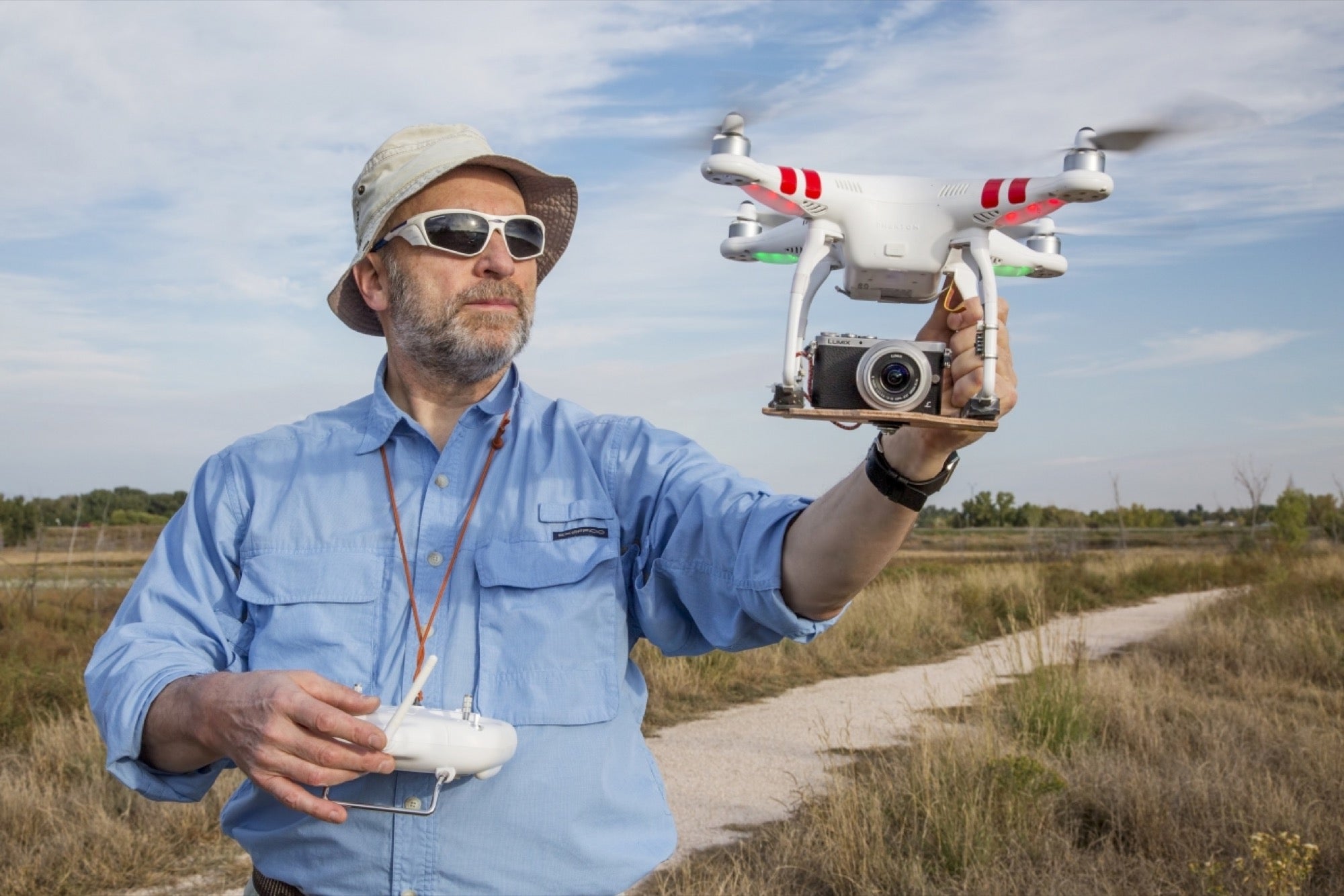Why the Drone Startup Market Holds Real Economic Potential Unmanned aerial vehicles or drones have already developed use cases in the consumer and commercial markets globally including hobby flying, mining & agriculture
By Sandeep Soni
Opinions expressed by Entrepreneur contributors are their own.
You're reading Entrepreneur India, an international franchise of Entrepreneur Media.

The supersonic evolution of start-ups in the drone market has outpaced evolution of regulations to foster their flight into the future. Following internet and GPS technologies, drones too have flown beyond their military origin. Hence, their real economic potential is more than just a few billion dollars as their ripple effects reverberate through the economy – akin to what aviation industry did to the world economy.
Unmanned aerial vehicles or drones have already developed use cases in the consumer and commercial markets globally including hobby flying, mining, agriculture etc. The relatively deglamorized market (because of being a hardware product and regulatory uncertainty) in comparison to existing modern technologies such as artificial intelligence (AI), big data etc., is too large to ignore.
"I haven't seen any other technology evolving as fast as drones. Four years ago, entrepreneurs running drone start-ups were building drones like kids in a hobby class. Today, however, you can buy drones off the shelf. A lot more automation has gone into them as many sensors have been built around drones since silicon (used for making sensors) has become cheaper and lighter," says Rahat Kulshreshtha, Founder and Chief Executive Officer, Quidich Innovation Labs.
The accessibility of drones and the learning cycle, hence, has become a lot easier – from two-three months to less than two-three weeks now. The Mumbai-based Quidich, founded in 2013, offers customized drone development and aerial filming. It has worked with Mumbai and Rajasthan police for surveillance of important events like T20 cricket match.
Ubiquitous Adoption
Drones much like other technologies replace human inefficiencies. For instance, government data collection process or activities including mining, agriculture, traffic management or oil and gas pipelines' inspection have intrinsic inefficiencies. The Delhi-based enterprise drone solutions start-up WeDoSky weed out such inefficiencies by extracting data using drones and processing them to help decision-makers make better decisions.
"For example in mining, we tell them whether the mines are safe or not, whether monthly production is up to the mark or not, or which part of large solar farms are not performing optimally etc," says Jaspreet Makkar, Founder, WeDoSky.
While conventional solution like satellites gives topographical images but they generally aren't high resolution enough for engineering purposes. The topographical data, therefore, is manually collected that can be hazardous and overall reduces the scale at which one can gather data. Drones, however, combine the best of both the worlds, where the data is comprehensive and accurate and gathered at scale to save the enormous time required otherwise manually.
However, more than the technology being easy or hard, the challenge has been about the mindset of people. "This was a tougher challenge for all of us apart from hardware cost and regulations, as industries, where drones can be used, are legacy industries and people are used to doing things the old way," says Mrinal Pai, Co-founder, Skylark Drones.
The start-up won the NASA Systems Engineering Award in 2013 for developing the best system engineering for drones. Pai adds, "The ecosystem including us has grown not because of the product or good teams etc., but because we all have been doing right things at the right time. Drone technology was an inevitable thing to happen four-five years back as hardware became cheap and people got more aware of it. People talk about AI, Blockchain etc., but what has truly grown is drone technology."
When it comes to drone-based deliveries, at first delivering blood, medicines, e-commerce packages, etc., sound extrapolatory. However, that has already started in other parts of the world that makes for better drone usage than a marketing gimmick like delivering pizza. For instance, Silicon Valley-based Zipline delivers donor blood for transfusions in the East African country – Rwanda.
Singapore is also planning medicine deliveries via drones in two years. In India, Indian Institute of Public Health-Hyderabad is also exploring drone-based delivery of medical products. In China, the e-commerce giant JD.com used a drone to deliver an order to a village in the mountains. The company has designed the drone to cut delivery time for goods from smartphones to food in areas where land travel is too expensive or slow.
"Such critical applications will be the first to use drones. You may also see unmanned taxis for which pilots are running in Canada, Dubai etc. Even the Indian government is stressing on it since India has a huge problem of traffic and logistics. The market evolves with the size and complexity of the problem. If it is big, you have to bring automation and advanced technologies," says Vipul Singh, Co-founder and Chief Executive Officer, Aarav Unmanned Systems. The Bengaluru-based start-up has raised pre-series A round from GrowX Ventures, 500 Startups, and others in March this year.
Impeding Growth
Despite the large opportunity, the investor interest has remained timid in drone start-ups. The turn off is how start-ups would deal with the regulations, which are still in process to come out since last two-and-a-half-years. While there has been a 25 percent jump in drone-based government projects from Financial Year (FY) 17 to FY18 (actual figures not available), the response from the private sector hasn't shot up.
"The government currently is using drones for agriculture, mapping, mining, construction for highways, security, defence, survey for towns and cities etc. They have been looking at the time saved and hence they are keen on using it across sectors," says Pritam Ashutosh, Founder, Edall Systems. The civil aviation ministry had launched the draft for drone policy last year to seek public comments and had announced in May this year that the final policy will be out shortly.
This, if continues for a long period, might lead to companies getting resource deprived. Their main aim henceforth would be to survive instead of investing in research and development (R&D) since there is significant money required in R&D for drones – at least Rs 10-15 crores to launch a new product. This further might hit the competitiveness of Indian companies globally. Hence, regulating the sector and launching large funds after a few years would make little difference to undo the damage.
"Most VCs raise money from large companies and hence, they always invest in start-ups which have some replicating pattern elsewhere in the world. The board or the investment committee doesn't allow investing in something that is not extrapolative," claims Singh. $10 million series A funding raised by drone manufacturing company ideaForge in December 2016 is perhaps the biggest funding round in the Indian drone market so far.
As the sector evolves over the next five years, much like other technologies, where corporates acquire young start-ups to imbibe technology and innovation, there would be opportunities in drones as well. In India, since large companies haven't been much receptive to the technology, they haven't yet invested in acquiring these start-ups or setting up drone divisions of their own and launching activities such as incubation or start-up fund exclusively for drone ideas.
However, current drone start-ups believe consolidation with large companies isn't the preferred route. Since most of them have grown with little or no capital support from investors, they want to continue bootstrapping until regulations are in place. "It would be the biggest tragedy that can happen with the drone industry since large companies in industries like automobile, don't have the temperament to invest into R&D. They run on 10-15 percent growth whereas industries driven by R&D cannot be supported with that growth type. You need surplus cash and you have to grow like Google, Facebook, or Tesla with 200 percent annual growth rate," explains Singh.
Drone start-ups are currently working on building together the ecosystem. The association called Drone Federation of India, formed recently aims at bringing closer the drone and related companies in the industry for the exchange of information and support to enhance growth.
Kulshreshtha that claims of owning one of India's largest fleet of drones asserts, "This is what has happened in China. For instance, in its southeastern city of Shenzhen, there are around 50 drone companies located next to each other. It makes sense because let's say if I announce testing of a camera for my drone, all the drone camera makers in the area would easily come to offer their cameras. In India, it takes 60 days to import a camera and try it."
At least, talent is where the industry doesn't have a problem. In fact, it is perhaps the only industry which has no discrimination in terms of education. Apart from skill sets and expertise, it requires nothing more than the ability to read and write in English while spoken skill is an add-on. A good drone flyer earns anywhere between Rs 4.5-8 lac annually.
The ecosystem needs to look 10 years ahead of what is needed and innovate accordingly instead of building products for today and losing out on the technology that is being built in the US or Israel. Hence, the question is whether India would like to create technology or adopt technology as the ecosystem moves towards passenger drones, aerial vehicles etc










